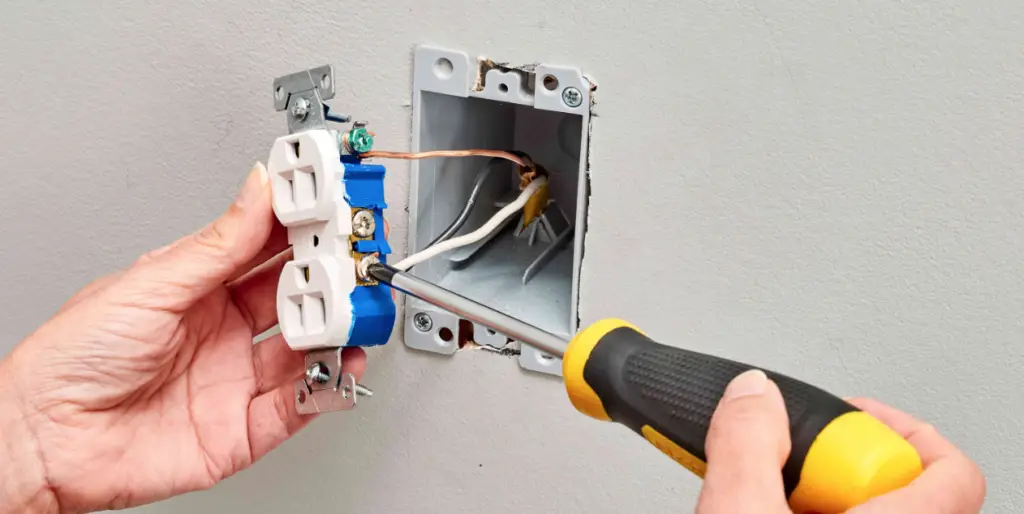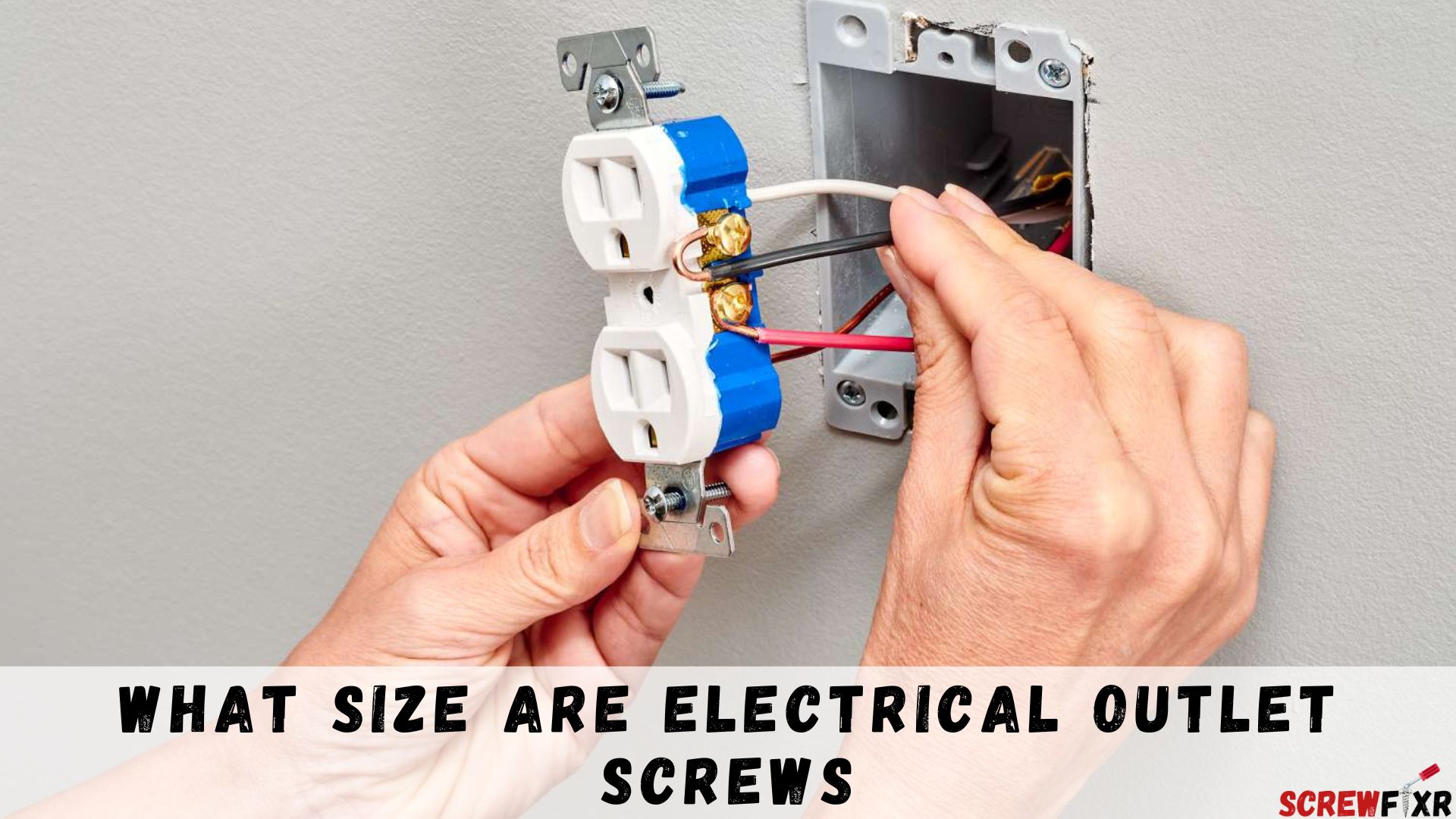When it comes to home improvement or DIY projects, understanding the size of electrical outlet screws may not seem like a top priority. However, knowing these details can save you time and frustration when working on electrical installations or repairs. In this article, we’ll dive deep into what size are electrical outlet screws, exploring their sizes, common FAQs, and much more.
Importance of Knowing the Size of Electrical Outlet Screws
Electrical outlet screws play a significant role in ensuring a secure and safe installation. Using the wrong size screw can lead to loose connections and potential hazards. By understanding the different sizes available, you can choose the right screw for your electrical outlet needs.
What Size Are Electrical Outlet Screws

Electrical outlet screws come in various sizes to accommodate different installation needs. Here’s an overview of the common electrical outlet screw sizes and an explanation of screw size measurements:
Common electrical outlet screw size: #6-32
The most common screw size for electrical outlets is #6-32. The “6” refers to the screw diameter in inches, and the “32” indicates the number of threads per inch. This size is used for standard residential outlets and switches.
Other available sizes: #8-32 and #10-32
In addition to the #6-32 size, there are other screw sizes commonly used for electrical outlets. These include:
- #8-32: This size has a slightly larger diameter and is often used for heavier-duty applications or when additional strength is required.
- #10-32: This size has an even larger diameter and is typically used for specialized outlets or in commercial settings where higher amperage is involved.
Explanation of screw size measurements
The measurement of electrical outlet screws follows a standard format that includes the screw diameter and threads per inch. The first number represents the diameter, while the second number indicates the number of threads per inch.
Understanding these measurements is important when selecting the appropriate screw for your electrical outlet. Using the wrong size screw can result in loose connections and potential safety hazards.
By familiarizing yourself with the common electrical outlet screw sizes and understanding their measurements, you can ensure a secure and proper installation for your electrical outlets.
Different Types of Electrical Outlet Screws

Flat-Head Screws
Description and characteristics:
- Flat-head screws have a low-profile and countersunk head.
- They are well-suited for situations that demand a robust fastening solution with a flush mounting.
- The flat-head screw features a solitary horizontal groove on its head, commonly known as the slot.
- The fastener head is driven by a common blade or flat-bladed (flat head) screwdriver.
- The slot has a flat bottom and is good for low-torque and low-speed applications.
Common usage:
- Flat-head screws are frequently employed in projects where components in motion need to traverse a secured region.
- They are less likely to snag objects moving overhead due to their ability to mount flush with the surface.
Phillips-Head Screws
Description and characteristics:
- Phillips-head screws have a head with pointed edges in the shape of a cross.
- They are designed to be driven by a Phillips screwdriver, which has a corresponding cross-shaped tip.
- The Phillips-head design allows for increased torque and reduces the risk of the screwdriver slipping out of the screw head.
Common usage:
- Phillips-head screws are widely used in various applications, including electronics, appliances, furniture, and automotive industries.
- They are popular due to their ease of use and the widespread availability of Phillips screwdrivers.
Understanding the characteristics and common usage of flat-head and Phillips-head screws will help you choose the appropriate screw type for your specific application.
Choosing the Right Screw
Screw length considerations
When choosing the right screw, it’s important to consider the length of the screw. The length of the screw should be appropriate for the thickness of the materials being fastened. The screw should be long enough to securely penetrate both materials, but not so long that it protrudes on the other side.
Importance of corrosion-resistant materials
Corrosion-resistant materials are crucial, especially for screws used in outdoor or damp environments. Choosing screws made from materials such as stainless steel or zinc-plated steel can help prevent rust and corrosion, ensuring the longevity and durability of the fastening.
Matching screw head type with screwdriver
It’s essential to match the screw head type with the appropriate screwdriver. There are various types of screw heads, including flat-head, Phillips-head, hex-head, and more. Each type requires a specific screwdriver with a matching head shape and size. Using the correct screwdriver ensures a proper fit and minimizes the risk of damaging the screw head or stripping the screw.
By considering these factors when choosing screws, you can ensure a secure and reliable fastening for your project.
Tips for Installing Electrical Outlet Screws
Safety precautions: turning off the power
- Before installing electrical outlet screws, it is crucial to turn off the power to the circuit you are working on. This ensures your safety and prevents electrical shock.
- Locate the circuit breaker panel or fuse box and identify the breaker or fuse that controls the specific circuit. Switch off the breaker or remove the corresponding fuse to cut off the power supply.
Proper tools and equipment
- To install electrical outlet screws, you will need a screwdriver that matches the type of screw head. This could be a flat-head or Phillips-head screwdriver, depending on the type of screws you are using.
- Ensure that your screwdriver is in good condition, with a properly fitting tip, to avoid slipping or damaging the screw head.
Correct tightening techniques
- When installing electrical outlet screws, it’s important to use the correct tightening technique to ensure a secure fit without damaging the screw or the outlet.
- Apply firm but controlled pressure while turning the screwdriver to drive the screw into the outlet. Avoid using excessive force, as it can strip the screw or damage the surrounding material.
- Stop tightening the screw once it is snug and flush with the outlet. Over-tightening may cause damage or cracks in the outlet.
By following these tips, you can safely and effectively install electrical outlet screws. Remember to prioritize your safety by turning off the power before starting any electrical work.
Frequently Asked Questions

Can I Use Any Screw for Electrical Outlets?
It’s not recommended to use just any screw. Electrical outlet screws are specifically designed to meet safety and electrical code requirements. Using the wrong screws can compromise the integrity of the installation and pose safety hazards.
What Happens if I Use the Wrong Size Screw?
Using the wrong size screw can lead to loose outlets, which can be dangerous. The outlet may not sit flush against the wall, exposing wires and increasing the risk of electrical shock or fire. Always use the recommended screw size for your outlet.
Can I Reuse Outlet Screws?
In most cases, it’s best to use new screws when replacing or installing outlets. Reusing screws can result in a less secure connection, potentially leading to loose outlets over time.
How Do I Determine the Screw Size I Need?
To determine the screw size you need, you can refer to the manufacturer’s instructions that come with the outlet. If those are unavailable, measure the diameter and length of the existing screws or the holes in the outlet box.
Are Stainless Steel Screws Suitable for Outlets?
Stainless steel screws are generally safe to use for outlets, but ensure they are of the appropriate size and type. Stainless steel offers corrosion resistance, which can be beneficial in some environments.
Can I Substitute Screws with Wall Anchors?
It’s not recommended to substitute outlet screws with wall anchors. Wall anchors are designed for different purposes and may not provide the secure attachment required for outlets.
Conclusion
In the world of electrical work, even the smallest details matter. Understanding the size and significance of electrical outlet screws can contribute to safer and more stable electrical installations. Remember to always choose the correct screw size, as it plays a vital role in maintaining the integrity of your electrical connections.


